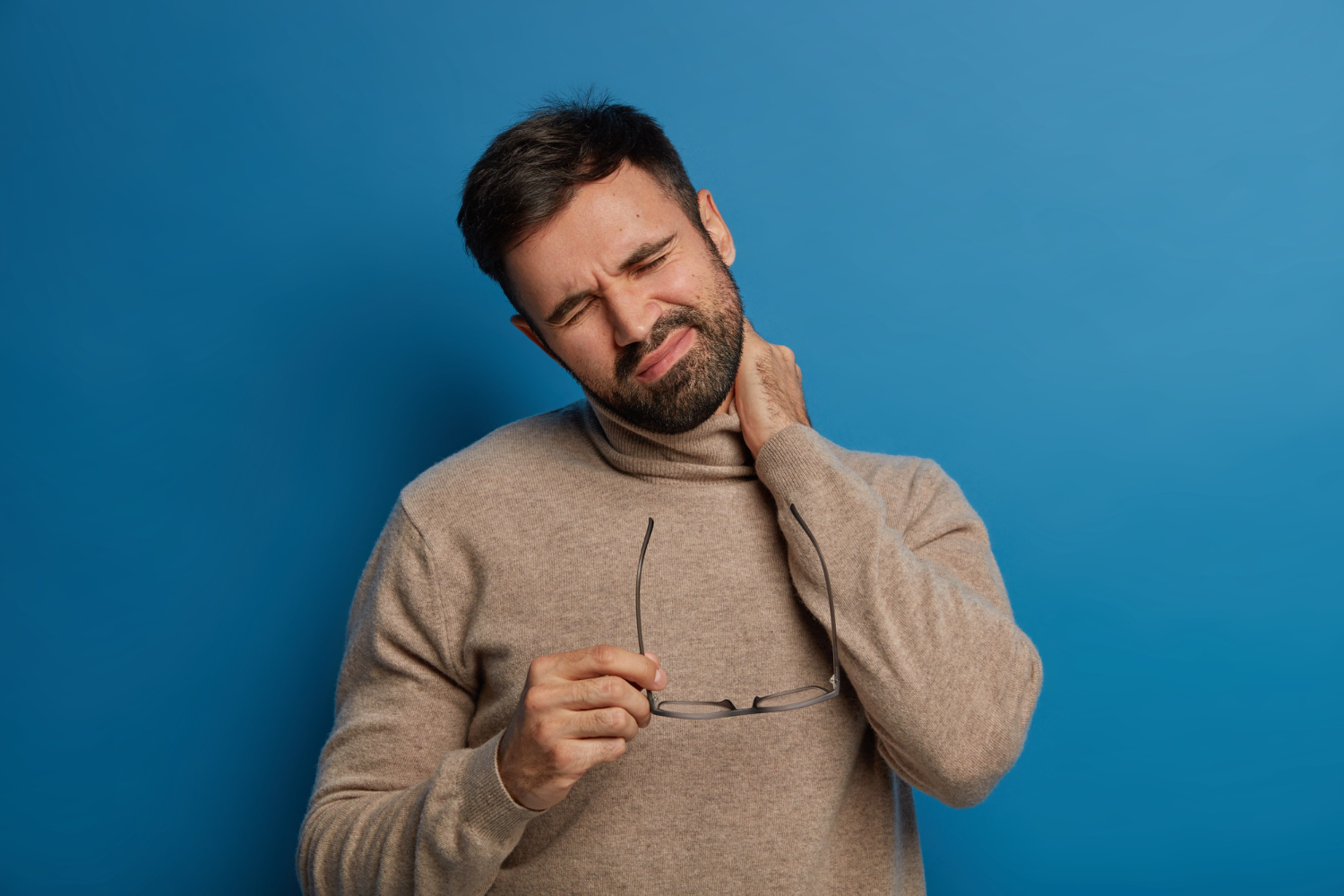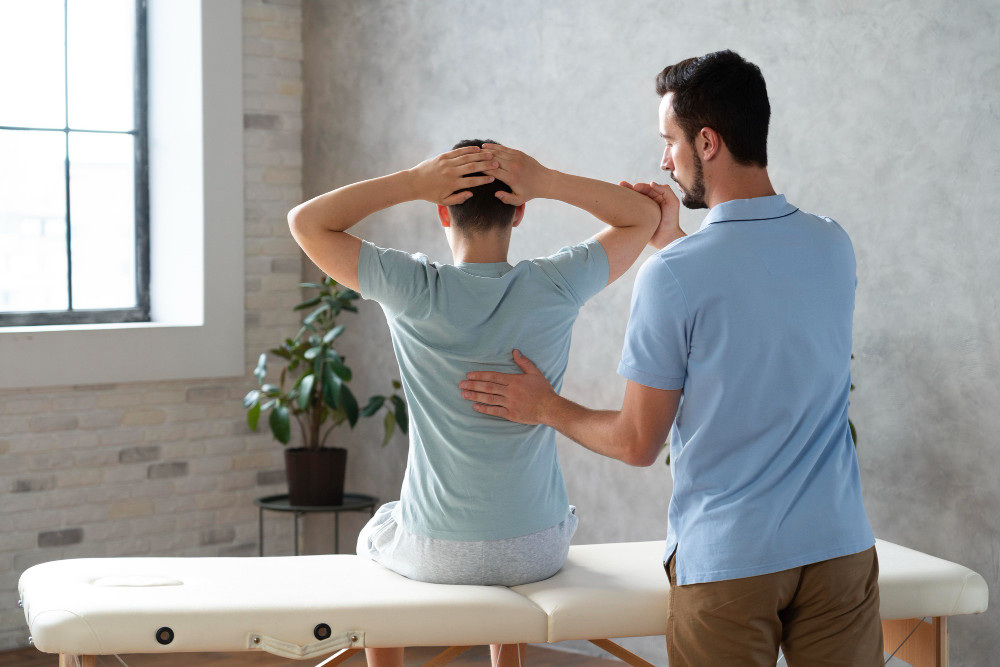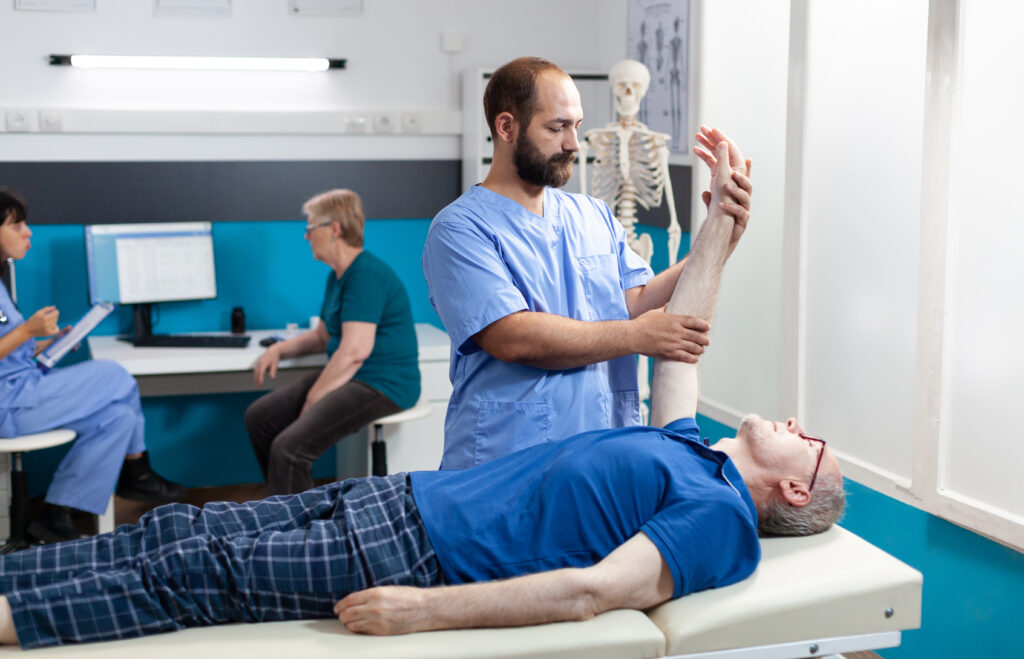Table of Contents
Pain diaries episode 1
Happy Winning Monday!
What’s going on!
Your favourite Chiro student—Ollie—is back in action!
Hope you’re feeling happy, jolly, and absolutely buzzing with energy, because I definitely am! Welcome to the very first episode of our Neck Pain Diaries, where we’ll chat all things neck pain—what it feels like, why it happens, and how we can fix it (with love, science, and maybe a little cracking 😉).
Grab your matcha (mine’s already half gone) or coffee, and let’s dive in!
3 min read
Neck pain
How you are feeling right now
Ouch. Neck pain.
It’s stiff, it’s sore, aching, tight, full of intense tension, isn’t it?
Whether it’s a dull ache or a stabbing pain, neck pain makes everything harder—turning your head, focusing on work, even enjoying your viral TikTok videos or favourite Netflix show. And let’s be real, it’s almost as bad as:
- Eating a soggy, expired croissant (yuck).
- Spending the night on a lumpy pillow (the audacity!).
- Or worse, waking up to zero WiFi.
For chronic sufferers, it’s more than discomfort—it’s exhausting. You feel stuck, stiff, and frustrated. I get it, friend, and we’re going to figure it out together.
Biomechanics reason: Why your neck kills you
Neck pain often results from biomechanical factors that disrupt the cervical spine’s natural function and alignment. Here’s a scientific breakdown:
1. Load and Strain on the Cervical Spine
The cervical spine supports the weight of the head, which averages 10-12 pounds in a neutral position. With poor posture, such as forward head posture (FHP), the mechanical load on the spine increases exponentially:
- At a 15-degree tilt, the head exerts 27 pounds of force on the neck.
- At 45 degrees, this increases to 49 pounds, creating significant strain on the cervical musculature and intervertebral discs.
- Reference: Hansraj, K. K. (2014). “Assessment of Stresses in the Cervical Spine Caused by Posture and Position of the Head.” Surgical Technology International.
2. Postural Imbalance
Prolonged poor posture, like slouching at a desk or “text neck” from phone use, leads to:
- Overactivation of the levator scapulae and upper trapezius muscles, causing muscle fatigue and pain.
- Prolonged tension in these muscles can alter the curvature of the cervical spine, resulting in cervical lordosis flattening or hyperlordosis.
- Reference: Nejati, P., Lotfian, S., Moezy, A., & Nejati, M. (2015). “The Relationship of Forward Head Posture and Rounded Shoulders with Neck Pain in Iranian Office Workers.” Medical Journal of the Islamic Republic of Iran.
3. Stress-Induced Muscle Tension
Psychological stress can activate the sympathetic nervous system (SNS), leading to sustained contraction of neck and shoulder muscles. Increases:
- Compression of the cervical facet joints and strain on surrounding soft tissues.
- Trigger points in the sternocleidomastoid and upper trapezius, which can refer pain to the head and shoulders.
- Reference: Ge, H. Y., & Fernández-de-las-Peñas, C. (2011). “Trigger Points and Neck Pain.” Current Pain and Headache Reports.
4. Inactivity and Muscle Weakness
Prolonged inactivity, such as sitting for long periods, weakens the deep cervical flexors (e.g., longus colli and longus capitis), shifting the workload to superficial muscles:
- Weakness in stabilising muscles leads to compensatory overuse of the upper trapezius and scalene muscles, resulting in pain and dysfunction.
- Reference: Falla, D., Jull, G., & Hodges, P. W. (2004). “Patients with Neck Pain Display a Reduced Capacity to Maintain Forceful Contractions of the Cervical Flexor Muscles.” Spine.
Summary
Neck pain often results from biomechanical stress on the cervical spine, which supports the 10-12 pound head. Poor posture, such as forward head posture (FHP), significantly increases this load—up to 49 pounds at a 45-degree tilt—causing muscle fatigue and strain (Hansraj, 2014).
My personal story
How my neck pain started
Let me spill the tea.
My neck pain started during a hectic uni and business grind. Picture this: endless laptop work, scrolling on my phone, reading textbooks, and absolutely zero self-care. No gym, no yoga, no love for my body. After three weeks of this terrible routine, my neck felt like it had been hit by a truck.
But here’s the good news: I fixed it.
- Yoga: Gentle stretches and poses brought my neck back to life.
- Chiropractic Treatments: Shoutout to the fifth-year students at my school clinic who adjusted my neck. My first adjustment was scary—would it crack? Would I cry? Spoiler: It cracked, and I might had a tear or two… from pure relief.
- Movement and Self-Care: I learned to keep moving, even during busy weeks. My body thrives on motion—it’s a love language I’ll never ignore again.
What would I redo next time? Listen to my body before pain arrives, seek help when I’m overwhelmed, and never stop prioritising my health and exercise. Lesson learned!
How a chiropractor helps
If neck pain is holding you back, let me tell you—it’s okay.
- Even if chiropractic sounds intimidating or unfamiliar., it’s okay.
- Even if you’ve never received a chiro treatment before, it’s okay.
- Even if hearing the daunting word “cracking” makes you nervous (been there, done that) it’s also okay.
Here’s the truth: chiropractors don’t just crack necks. We’re trained to help you in ways that fit your comfort level. Prefer a gentle approach? We’ve got tools like the activator, applied kinesiology, or Thompson drop table. Need soft tissue therapy or cranial work (SOT)? We’re on it.
(Refer to our blog “Chiropractic Types, >150 Techniques!?”)
Every adjustment or therapy we provide is based on biomechanics, science, and a deep understanding of your body’s needs. We’ll walk you through every step of the process because our philosophy is simple: we’re here to help you heal.
Warm wishes, Ollie xoxo





